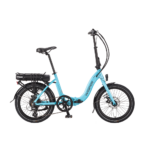I don't see the difference with "250w " rated Bosch motors that can reach 28 mph :
Hello forum, I’m about to buy my first ebike and I was leaning towards the Bosch equipped bikes because they have better sensor integration. But I was surprised to see that even the Performance Line Speed (Gen4) is 250 watts. In a marketplace where even entry level Chinese bikes are 1000...

forums.electricbikereview.com
It they were having a crackdown surely it is more likely they would go after Bosch because of the numbers of motors involved ?
The power rating is defined in law, different countries have different laws defining how the motor power should be rated. Compliance is the manufacturers responsibility
Bosch would need to answer for themselves. Some of the differences I see are:
No throttle on a Bosch, entirely controlled by a sophisticated algorithm and accurate, fast responding torque sensor. Higher motor power is only available with higher rider power.
No means to override top speed other than dealer software (dongles excluded).
Quality of control algorithm effectively cuts off assistance at 25km/h.
A customer buying a 250W marked TSDZ8 is probably entitled to place legal 'reliance' on the information provided by the manufacturer and supplier, so probably has nothing to worry about, as long as throttle and cutoff speed are correctly set, although the ease with which those settings can be changed may be a problem.
The fundamental problem is the fact that the power test used in EN15194 does not test for maximum rated power, despite the test result being treated as that. The way the standard is treated at present does not require any curiosity on the part of the tester. If the motor 'passes the test' which simply means 'does not overheat' on a test run at 250W, then it can be claimed to have a 250W maximum continuous power rating.
There is no requirement to test at higher powers to see if it passes. If a test run at 500W was passed, then the motor would have to be rated at 500W. But the classic blind eye approach in current use does not require that test to be performed.
An expert witness in a theoretical trial one day might be more curious. They might start with a test at say 1000W, anticipating failure, and then work down in 100W increments until the motor passes. That way a true figure would be known.
In the present situation there is nothing to stop a 10kW motor being claimed as 250W.
My view is that change will come, probably not soon, and probably as part of a reevaluation as bike numbers and incident/accident numbers grow.
Until then it is as well for users to know that the spirit of EN15194 is being widely flouted.

 www.e-bikeshop.co.uk
www.e-bikeshop.co.uk










